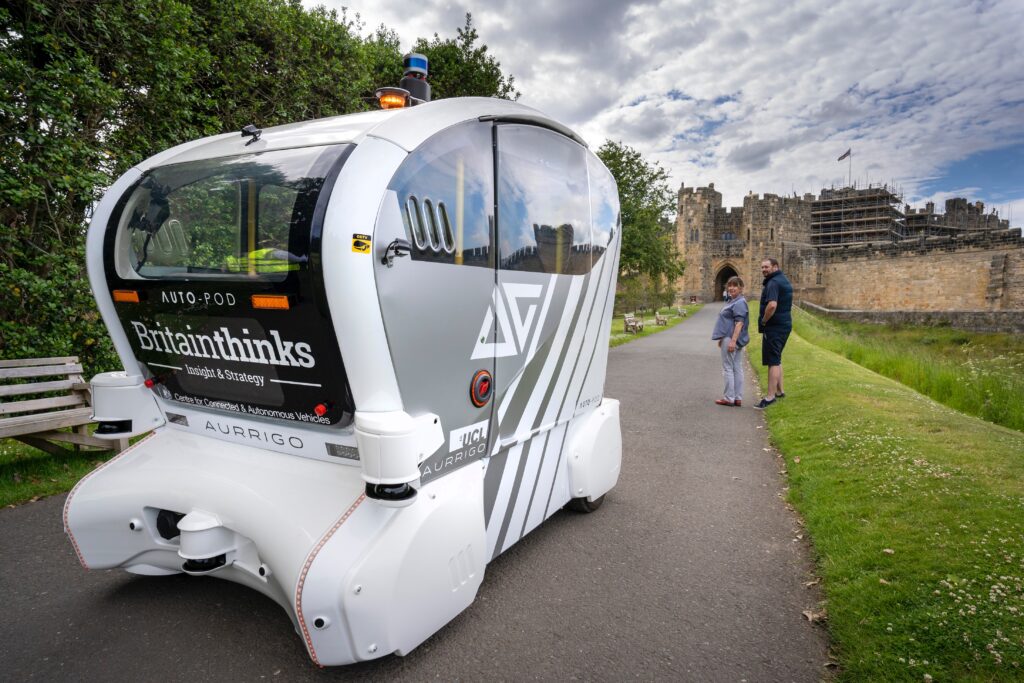A 2022 study on self-driving vehicles (SDVs), conducted by Thinks Insight & Strategy and vehicle developer Aurrigo, and commissioned by the Department for Transport (DfT), has been published.
For the study, self-driving vehicle trials were carried out in three parts of the UK where exposure to AVs was classed as high, medium and low, with a control study carried out in a area where there was no AV exposure. The purpose of the study was to ascertain the public’s perception of autonomous vehicles and what they wanted most from the mobility solution. More than 1000 people took part in the study.
SDV trials were carried out in Alnwick, Northumberland, at the Etihad Stadium in central Manchester, and in Taunton, Somerset. The vehicles traveled around each location for a one week period, enabling locals to try the SDVs for themselves, or to watch from afar to see how they navigated the roads.
Think’s Insight and University College London’s research teams interviewed residents at each location to find out their personal opinions or experiences of the SDVs, including hopes or concerns. During the trials, the project partners utilized EEG technology to measure the brainwaves of passengers in the vehicles; this gave new insight into how people felt being driven around.
 Key findings of the study included growing concerns about safety, and locals thinking that the SDVs would be more suitable elsewhere – concerns which changed when it was demonstrated how well the vehicles could navigate through traffic, and when the study participants were told about use cases such as summoning apps, shuttle services and shared mobility.
Key findings of the study included growing concerns about safety, and locals thinking that the SDVs would be more suitable elsewhere – concerns which changed when it was demonstrated how well the vehicles could navigate through traffic, and when the study participants were told about use cases such as summoning apps, shuttle services and shared mobility.
“I wasn’t expecting to go out on ‘real’ roads, I was only expecting a few laps of the car park in a controlled environment, very impressed that the technology is actually ready,” said one resident.
“I feel positive,” said another. “The existing public transport system in Alnwick is so appalling, expensive, and hardly ever used – I feel like this technology provides a complete re-think in how people get around on public transport. If you could use it up to the station or to the supermarkets at the edge of town – then it would have a role.”
“This research project broke new ground by taking self-driving vehicles to communities that have never seen them before, and asking open questions about how the local transport system could benefit, or not, from this innovative technology,” said Lucy Farrow, associate partner at Thinks Insight and Strategy. “The report brings together insight on what citizens want from a self-driving vehicle, and a self-driving vehicle service, whether in a rural setting or an urban center.
“We identified challenges, including the continued importance of safety for passengers and passers-by, but also solutions in terms of communications and deployment strategies. Importantly, this project put citizens at the heart of the self-driving vehicle picture for the first time, which is crucial if this technology is going to deliver benefits for the many and not just the few.”
The full report can be found here.


